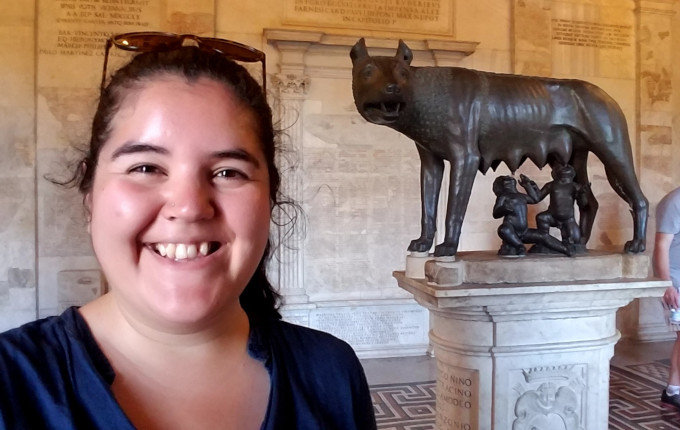Andrea Acosta has been awarded a SPARC Graduate Research Grant. Her research explores the family structure of prehistoric Central Italy (Latium) and how this structure shaped the community's sociopolitical organization.
What is your research project about?
My research project examines the largest Iron Age cemetery excavated in ancient Latium, modern-day Lazio. This is a remarkable cemetery due to the unique organization of its 600 burials into approximately 12 different clusters. Based on the spatial and grave good distribution, it is hypothesized that these burials represent at least two distinct lineages or extended families from the Lake Castiglione area. My dissertation research seeks to reconstruct the kinship, dietary, and mobility patterns of those interred at the cemetery Osteria dell’Osa using cranial and dental nonmetric traits as well as biochemical analyses to learn more about how their social organization was structured during the Iron Age (9th-7th c. BCE).
What prompted you to get involved in your project's research topic?
During my MA, I was fortunate to study the remains dating to the 5th c. BCE from the ancient city of Gabii, sister city to Rome. Gabii was started around the 8th c. BCE, but archaeological and funerary evidence suggest that this area has been inhabited since the Late Bronze Age (11th -10th c. BCE). Just across the street from Gabii lies the Latial cemetery of Osteria dell’Osa which provides much of the evidence of the social organization and urbanization processes of this community, as mortuary rituals reflect and reinforce the social structures of everyday organization.
I am interested in learning more about the initial process that led a group of small communities to grow exponentially in just a few centuries.
Before DNA analysis, how will you determine which skeletons are related?
First, each adult individual will be examined for nonmetric cranial and dental traits, which are heritable features; their frequencies in a population suggest genetic relationships among individuals. Nonmetric cranial and dental data can be used to statistically determine if individuals or groups are closely biologically related. Once these data are collected and analyzed, they will be combined with the archaeological data available to explore how people buried at Osteria dell’Osa defined kinship culturally and whether this was informed by biological concepts.
How does ths story of Romulus and Remus relate to the project?
It does at two different levels:
First is figuratively, because the tale of brothers Romulus and Remus is still cited today, since antiquity, as the origin story of the city of Rome and the Romans. Roman historians and traditions not only asserted that Romulus founded the city in 753 BCE, but also traced every Roman institution back to him; essentially making him a symbol of the Roman state itself.
The second way is literally, since classical texts cite Gabii as the place where Romulus and Remus were sent to learn the ‘arts’ such as music, combat, and literature, thus, connecting Rome and Gabii since their foundations during the Iron Age. My research project will investigate the role that the family as a sociopolitical unit played in the formation of the social stratification of Latium.
In one of your grant applications, you mention that children were buried under floors and walls from the 8th - 6th centuries BC. What was the reason for this cultural practice?
The reason for this change in the funerary customs is still unknown, but it is found to be practiced across all Central Italy and by other cultures such as the Etruscans. One of the main hypotheses today posits that as the urbanization process of the area increased, people started burying their infants near their houses and other urban spaces in order physically and symbolically connect the household and the landscape.
Are there any myths or misconceptions about Roman kinship patterns or social structure that you'd like to clear up?
Yes, I think it is important to note that the contemporary (and Western) concept of “family” that we have today has not stayed the same across cultures and throughout history. The structure of the Roman family is similar to an extended family, and it was the heart of Roman society. Besides consisting of uncles and aunts, its definition stretched beyond biological terms to include business partners, enslaved peoples, and adoptees. In fact, adoption was common and practiced to maintain power and forge alliances. Although there is extensive historical and legal documentation about the Roman family, it is unclear how old and how unchanged kinship systems remained prior to written documentation. I am hoping my research can help elucidate some of these questions.
Photo Credit: Andrea Acosta in front of the Capitoline Wolf statue. The statue features a wolf suckling Romulus and Remus. Image by Andrea Acosta
